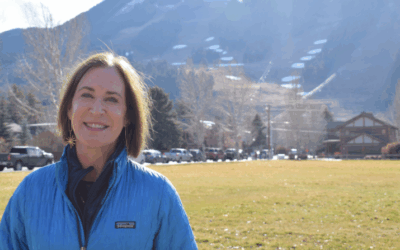Wyoming’s first bilingual art exhibit reopened on Sunday. Somos de Aqui: the Enduring Wildlife of Puerto Rico was shut down just days after its opening in May due to flooding at the National Museum of Wildlife Art. Luckily, all of Lina Collado Garcia’s work, which includes photographs, and videos and descriptions in both English and Spanish, was unscathed.
Collado Garcia is a photographer living in Jackson. She was born in Puerto Rico and spent the last year traveling back and forth to capture issues of wildlife and conservation in the aftermath of Hurricane Maria, the 2017 category five hurricane that decimated the archipelago.
A translator and staffer at Teton Literacy Center, Collado Garcia wanted to gear such an exhibit toward one of the area’s newest communities. “After the museum had translated the labels for all the main galleries, we knew that we needed to do something else and bring something else to the community that was more than just labels. That’s when I brought the idea of doing something focused on Puerto Rico, specifically because so many Puerto Ricans have moved here since Hurricane Maria.”
Indeed, before Hurricane Maria, Collado Garcia was one of just a few Puerto Ricans in the area. Now, she says, there are more than 200. “There’s a brand new community in the town, which is a very different Latino community [than the Mexican-American community]. And from there the idea was trying to bring awareness to what Puerto Rico is, where it is, and the enduring story behind its biodiversity and its people as well.”
The biggest source of inspiration for creating this exhibit, Collado Garcia says, lies in its linguistic ambitions. “Spanish being the first and main language of Puerto Rico, that was also very important to me to reflect it as it is, rather than dubbing or keeping everything in English.”
Collado Garcia also points out that every biologist and artist that is represented in the exhibit is from Puerto Rico. “So it provided an opportunity to tell the story of Puerto Rico through the eyes of Puerto Ricans.
The exhibit’s reopening on Sunday synced with a talk by Dr. Rafael Joglar, a herpetologist from the University of Puerto Rico. Herpetologists are zoologists who study reptiles and amphibians. For Joglar that means the coqui, the famous frog endemic to Puerto Rico. Its song can be heard throughout the Puerto Rican islands. The coqui is among the wildlife featured in Somos de Aqui. In fact, visitors to the exhibit wont just see photographs and videos of the frog, they’ll hear it too.
Collado Garcia says no matter where you are in Puerto Rico, unless you’re out on the ocean, you will always here the common coqui. “Each species, there are 14 currently living in Puerto Rico, has a different song. This is the one that is most common and once you have some quiet time in the exhibit room, you can tell that it is all over the exhibit.”
The exhibit is named after part of a Puerto Rican saying: Somos de Aqui, como el coqui. It means “We are from here, like the coqui.” For the more than 200 Puerto Ricans who have settled in Teton County since Hurricane Maria devastated the U.S. territory, Collado Garcia hopes the show will offer them a slice of home and a feeling of pride.
Teresa Rivera happens to be a Puerto Rican transplant. She is still learning English so Luis Peguero translated: “Since there are now a lot of people here from Puerto Rico, it makes me feel proud because people can see something that belongs there even though we are in Wyoming, which is a state that not a lot of people know about back in Puerto Rico.”
Somos de Aqui tells the story of the two most important habitats in Puerto Rico: El Yunque, the only national rain forest in the U.S. national forest system, and Mona Island, a nature reserve considered the Galapagos of the Caribbean, Collado Garcia says.
The exhibit zeroes in on species that lived in those locations or live in them now, including some that face the threat of extinction. Among the most imperiled? “The Puerto Rican parrot, where there is only 82 left in the wild on the entire island,” Collado Garcia says. “Before the storm, there were 180.”
Somos de Aqui: the Enduring Wildlife of Puerto hangs at the National Museum of Wildlife Art through June 25.






